The evidence is now in, and the conclusion (I think) is unarguable. The innocent 1954 Chrysler Windsor that I own is indeed the forerunner of the famous 1955 Chrysler C300. The success of the Brigs Cunningham C4R and C5R race cars that used a modified 331 c.i. hemi engine was just too tempting an opportunity for Chrysler to ignore. Here was a golden opportunity for them to grab a huge market presence by capitalizing on the racing success of those cars. The newly designed Virgil Exner body still under development for the 1955 introduction would be the ideal platform to install the 300HP hemi headed engine since it would be the most powerful production engine ever produced for use in a passenger car.

When I investigated my car in detail, particularly the engine, I was struck by the similarity to the C4R and C5R engines. The differences are those that would make sense for a car headed to production. I am showing you the two engines next to each other so you can see for yourself the amazing similarity.
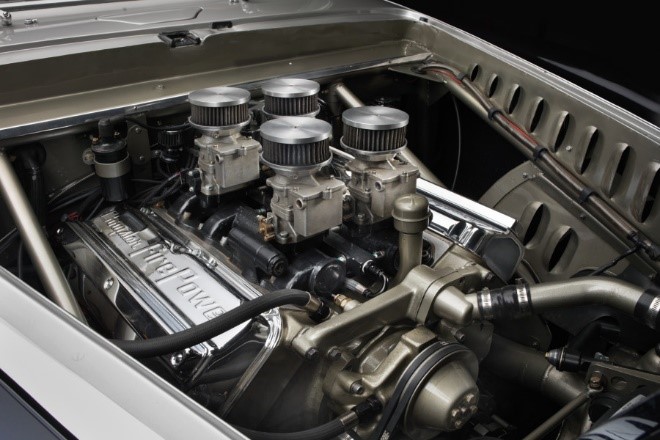
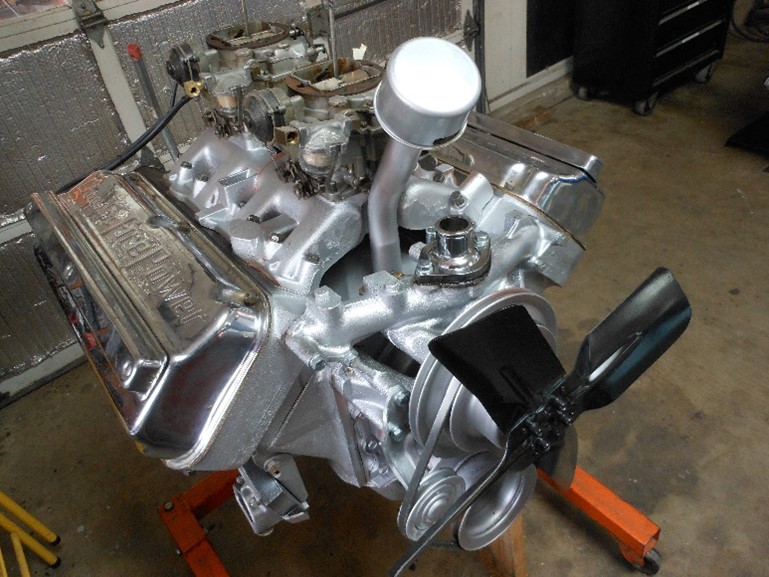
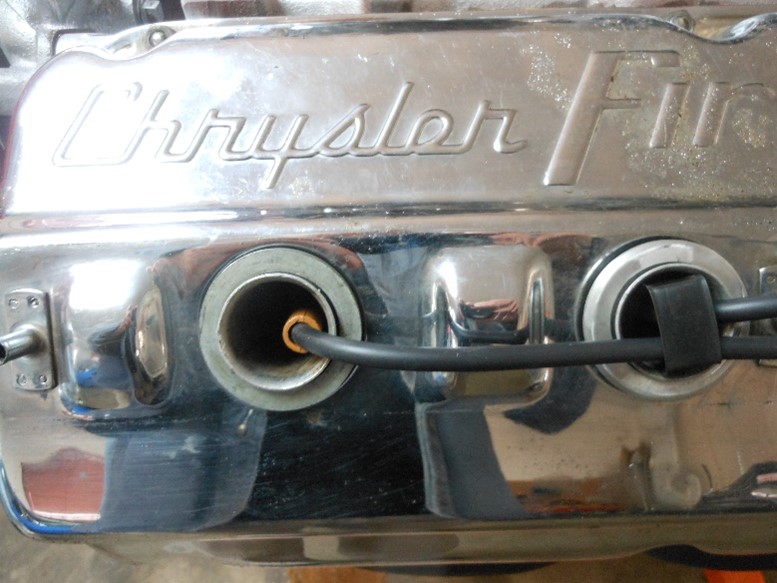 Moving from a four carb manifold to a two four barrel manifold made a lot of sense as it would cost less, be easier to tune, and probably be more reliable. The chrome valve covers on my engine were replaced with gold-colored covers for production. It is essential to note the stamping on the engine block. The 3NE55 stamp proves beyond doubt that it is a 300 engine. The “3” was only used on the engines for the 1955 C300 model, which was the first letter car. There is another – very subtle – identifying characteristic. If you remove the spark plug wiring covers on the valve covers, you find four raised humps that were necessary for rocker arm lift clearance required for the high lift solid lifter cam shaft used in the engine. Item to Note: The 300 engine is the only engine that has these valve covers!
Moving from a four carb manifold to a two four barrel manifold made a lot of sense as it would cost less, be easier to tune, and probably be more reliable. The chrome valve covers on my engine were replaced with gold-colored covers for production. It is essential to note the stamping on the engine block. The 3NE55 stamp proves beyond doubt that it is a 300 engine. The “3” was only used on the engines for the 1955 C300 model, which was the first letter car. There is another – very subtle – identifying characteristic. If you remove the spark plug wiring covers on the valve covers, you find four raised humps that were necessary for rocker arm lift clearance required for the high lift solid lifter cam shaft used in the engine. Item to Note: The 300 engine is the only engine that has these valve covers!
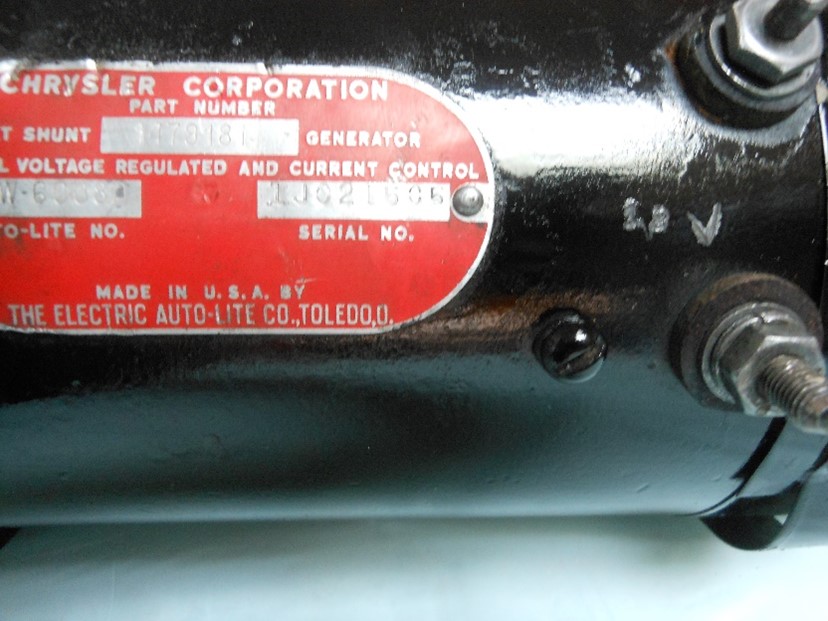 There is one more interesting, modified part on the engine, which is the generator. Until 1956, all Chrysler cars used a 6-volt positive ground electrical system. If you look closely at this generator, it is stamped with a “12” indicating it is a forerunner for the 12-volt 1956 electrical system.
There is one more interesting, modified part on the engine, which is the generator. Until 1956, all Chrysler cars used a 6-volt positive ground electrical system. If you look closely at this generator, it is stamped with a “12” indicating it is a forerunner for the 12-volt 1956 electrical system.
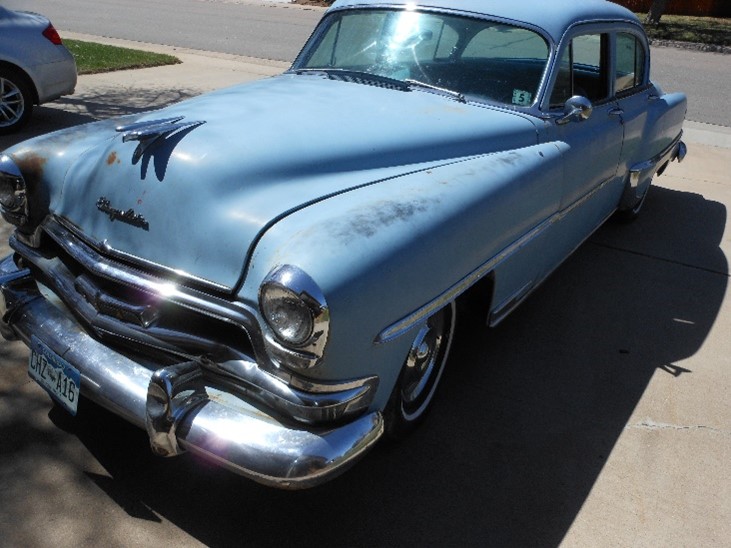 Now let’s consider the rest of the car. Since the new “Forward Look” styled body of the 1955 models was still under wraps, it is logical that Chrysler engineering would use a current model to secretly test the radical 331 cubic inch 300 HP engine. What could be more improbable than a bottom of the line Windsor model which normally came equipped with the old reliable flat head six cylinder engine? A nice reliable salesman’s car. How might it need to be modified to serve as a test mule for the engine?
Now let’s consider the rest of the car. Since the new “Forward Look” styled body of the 1955 models was still under wraps, it is logical that Chrysler engineering would use a current model to secretly test the radical 331 cubic inch 300 HP engine. What could be more improbable than a bottom of the line Windsor model which normally came equipped with the old reliable flat head six cylinder engine? A nice reliable salesman’s car. How might it need to be modified to serve as a test mule for the engine?
The flathead six is a long block engine with one front engine mount, so it would be necessary to have new frame engine mounts to accommodate the hemi. Take a look at this picture and note the non-production engine mounts.
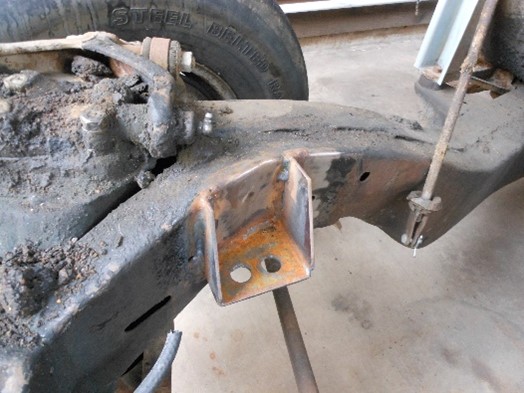
The instrumentation required for a high performance test vehicle would have to be more complex than what was adequate for a pure production machine. Take a look at the instruments that will be part of the car. A four gauge instrument cluster is used in place of the simpler two gauge cluster.

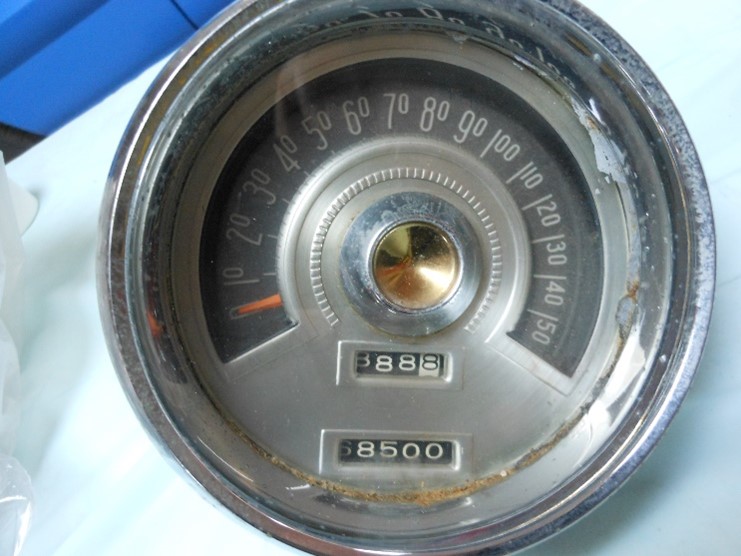
The really big eye-opening change is the use of the 150 mph speedometer in place of the standard 110 mph unit.
The final icing on the cake is what I found on the firewall right under the factory production stamp: the letters “EXP” and the circled initials. It can only mean one thing – “FACTORY EXPERIMENTAL!”

How on earth did this car ever get away from the factory? Hard to say, but when I rescued it from its remote Colorado high plains hiding place, I had no idea what I was getting. I should have it back on the road later this year if I am lucky. Should you be passed by a pale blue old Chrysler doing over 100mph, you will know the story and who is behind the wheel. What a car!
===================================
Publication date: April 1,2023
Got an early response from a reader:
“Liar, liar pants on fire.“
